Reviews
oi
-Sudhanshu Singh
After months of carrying the Pixel 10 as my daily driver, this much is clear: it’s the most complete “base” Pixel in ages. The 5x telephoto finally makes the non-Pro Pixel a good camera phone (not the best), the compact-ish 6.3-inch Actua OLED looks fantastic in Indian conditions, and Google’s Tensor G5 keeps day-to-day feels snappy with useful AI on top.
There have been early-life quirks (a “screen snow” glitch that was patched, and Daily Hub-a new dashboard-pulled for rework), but the platform has been trending better with monthly updates. Battery life settles into one honest day, charging is conservative at 30W wired and magnet-assisted Pixelsnap at 15W Qi2, and you get a 7-year software promise that shifts the long-term value equation in Google’s favor.

- Excellent camera versatility
- Seven-year software support
- Compact, premium build

- Slow charging speeds
- Mediocre gaming performance
- High price point

But all of this comes at a price that opens a buffet of options in a competitive and crowded market like India, diffusing the value that Pixel brings. So, who is it made for? Should you even consider this at Rs 79,900? Let’s find out.
Design & in-hand feel: classic Pixel, sturdier where it counts
Google didn’t reinvent the silhouette and I’m glad because that’s what makes it unique looking. The metal frame and satin glass back feel premium without screaming for attention. The fit/finish on my unit has held up to backpacks, desk slides with hair-like micro scratches.

At 204 g, it’s well balanced and the Gorilla Glass Victus 2 front and back plus IP68 make it easier to live with long term. I still recommend a thin case because the satin picks up micro-smudges in humid weather.
Small but meaningful touches I love day to day
- Haptics & buttons: crisp, reassuring clicks.
- Pocketability: compact and lighter than many flagships; slips into jeans without a struggle.
- Pixelsnap: third-party Qi2 pucks and stands snap cleanly-great on my work desk. (Reverse wireless charging is gone this year, more on that below.)
Display
In simple terms, the display is bright enough for Delhi afternoons, easy on eyes at night. The 6.3-inch Actua OLED runs 60-120 Hz and peaks at 3,000 nits, with ~2,000 nits HDR. Outdoors, WhatsApp text and Google Maps are clearly readable; indoors, color is pleasingly neutral in “Natural.” No obvious green/pink shifts on my panel, and AOD brightness is conservative enough to avoid burn-in anxiety.

If you’d compare these on paper specs with most other phones at this price or even less, and even in day to day usage, I wouldn’t say there’s anything exceptional about this display. It feels smooth, touch response is seamless, it’s plenty bright – but that’s something you easily get when you spend this much.
Performance & Thermals
Tensor G5 is tuned well for smooth day-to -day tasks like social media, camera, and frequently used apps like Youtube, but it can’t do benchmark flex when compared to competing chipsets from Qualcomm and Mediatek.
Spec sheets won’t tell you this, but Pixel performance is fine when it comes to feel. Meaning, animations don’t hitch, instant dictation, Live Translate that actually keeps up, and camera processing that doesn’t lock the viewfinder. Tensor G5 plus Google’s AI stack delivers that in spades for messaging, photos, search, and commute logistics.
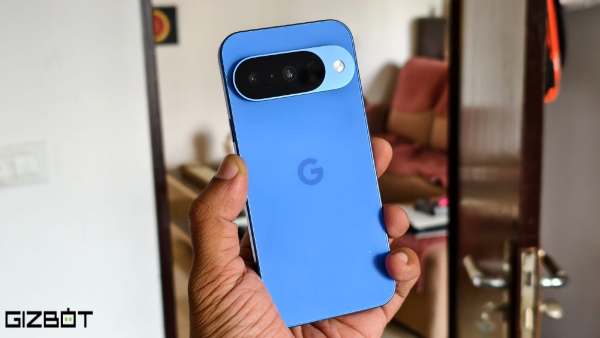
On the gaming side, sustained GPU isn’t a Snapdragon-class. Google and partners have promised continuing GPU driver updates on Android 16, but sustained performance on the Pixel 10 is not as encouraging if you play heavier titles. I’m fine with 30-45 minutes of Asphalt and Call of Duty: Mobile; longer Genshin or Warzone sessions will warm the chassis and drop frames sooner than some rivals. You get better performing gaming phones under Rs 50K price if that’s among top use cases for you.
In Delhi heat, maps + camera + 5G will push temps into “warm but usable.” The phone recovers quickly once you hop back on Wi-Fi. That matches what I’ve seen across Pixels since the 6-series-better here, but still not a gaming champ.
Cameras
The upgrade many asked for-5x telephoto on the base Pixel saves the camera department. On a phone priced on the higher side, it’s essential to have a better than standard camera performance to justify the value. For someone like me, irrespective of how premium the phone is, it gets impossible to use it as a daily driver if the cameras are underwhelming. Thankfully, Pixel 10’s cameras were not as depressing.
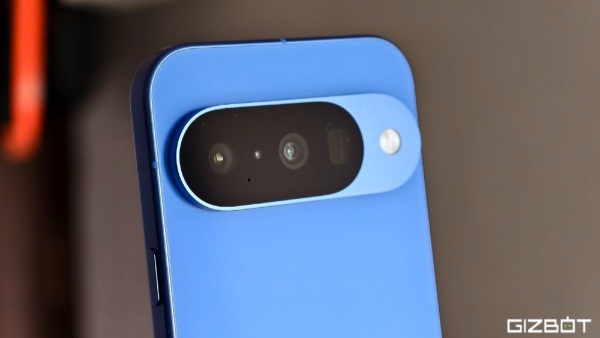
The reasons why I’ve stuck with the Pixel 10’s camera:
- 48 MP main (with HDR+ and Night Sight)
- 13 MP ultrawide
- 10.8 MP 5x telephoto with 20x Super Res Zoom
Concerts, school functions, quick stage events, this 5x saves shots you simply couldn’t get on the Pixel 9 or many rivals at the price. In good light, 5x to 10x feels optical-quality. Low light telephoto is usable if you steady your hands. The main cam remains classic Pixel with natural skin tones and realistic contrast.

Video gets dependable stabilization and 10-bit HDR that looks great on HDR TVs. India reviews have broadly agreed on the quality uplift, while noting ultrawide is decent rather than class-leading.
Real-life camera notes from daily use
- Portraits: Cleaner subject separation at 1x and 2x; faces look like skin, not plastic.
- Night Sight: Still the “don’t think-just shoot” low-light mode. Street food shots and indoor events come out punchy without cartoon-ish colors.
- Zoom etiquette: 5x is the new default for stage shots. At 15-20x, don’t expect miracles, but signage and faces remain usable for social media use.
- Macro Focus: Handy for food details and small product shots.
- Selfies: 10.5 MP AF front cam with 95-degree FOV fits groups; AF saves you from soft-focus selfies.

Battery life & charging: a true one-day phone, conservative top-ups, smart battery guardrails
My usage pattern (two email accounts, Teams, Instagram, X, 100-150 photos/week, 5G + Wi-Fi handoffs) consistently lands me at 15-25% by bedtime. On weeks with heavy hotspotting and maps, I find myself topping up by early evening. Mostly, it can give around 6 hours SoT on mixed use is common.
Charging is where Google refuses to join the wattage wars, and it’s time it should:
- 30W wired (USB-C PPS), adapter sold separately
- 15W Qi2 wireless via Pixelsnap magnetic alignment
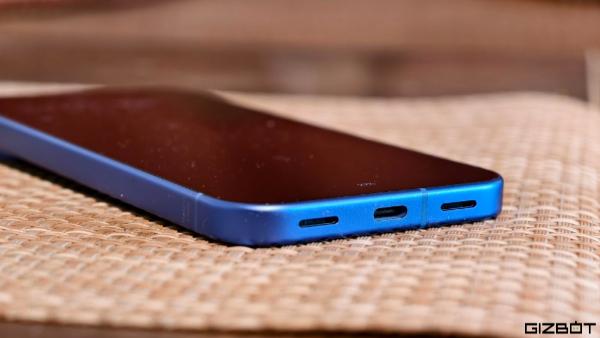
It’s slower than some rivals, but kinder to thermals and longevity. Note that reverse wireless charging (Battery Share) is gone this year. Google says the Qi2 magnet array is the reason. If you used Battery Share for buds, that’s a bummer; if you love MagSafe-style stands and pucks, Pixelsnap is useful.
About long-term battery health
Pixel 10 uses a mandatory Battery Health Assistance behavior that gradually limits voltage and slows charging after approx. 200 cycles to preserve the cell. You can’t disable it. In practice, months later you may notice slightly shorter endurance and longer charge times, but the goal is a healthier pack over years. I’m not okay with that trade-of given most people I know don’t use their Android phones more than 3 years. So, just set realistic expectations if you’re coming from a 65-100W phone.
Connectivity, calls & India-specific bits
Pixel 10 supports Wi-Fi 6E, BT v6, and comprehensive Sub-6 5G bands used by Jio/Airtel/Vi in metros. NavIC is present, which helps with reliability in dense urban areas. Dual-SIM (nano + eSIM) has been painless, and call quality on Airtel has been consistently clean. The USB-C port is USB 3.2, so for tasks like offloading 4K video to SSDs is quick.
Software & AI
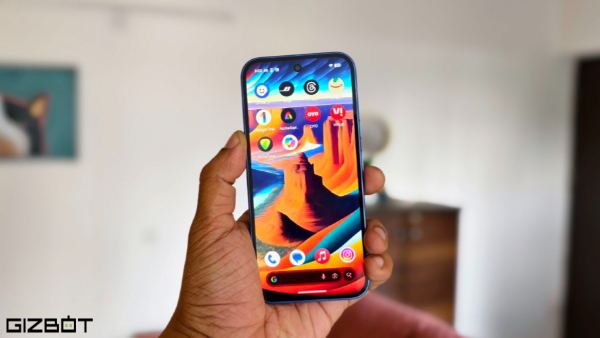
Out of the box, you’re on Android 16 with a 7-year runway of OS, security, and Pixel Drops. That’s unmatched under ₹80K and is a big reason I recommend the Pixel 10 to people who keep phones over 3 years. Day to day, the features I actually use are:
- Circle to Search for instant “what is that?” moments.
- Gemini Live for contextual assistance (e.g., asking about a street sign or ingredients).
- Magic Cue and Camera Coach-little nudges that shave seconds off tasks and help non-camera nerds get better photos.
What changed after launch
- Daily Hub-a proactive dashboard-was pulled from public preview to improve it; Google says it’ll relaunch once it’s actually useful. Sensible call.
- A “screen snow” glitch (random static) affected some early units and was addressed via updates in early September; monthly patches continue. My unit has been fine post-update.
Audio, haptics & extras
Stereo speakers are loud enough for podcasts over kitchen noise but not class-leading for bass. Mics are excellent-speech enhancement and wind noise reduction help a lot in street recordings. Haptics feel precise rather than buzzy. Face unlock is fast in daylight; fingerprint unlock on the display is reliable.
What actually aged well vs. what annoys me
Aged well
- Camera consistency: “get the shot” confidence, especially with the new 5x on a non-Pro.
- Clean Android + drops: small but meaningful features keep showing up.
- Build & size: durable, pocket-friendly for a modern flagship.
Annoys me
- Charging speeds still feel like 2022 in a 2025 world. Qi2 is nice; I still wish for 45-65 W wired.
- Battery Share removed: I used to top up earbuds on older Pixels; can’t anymore.
- GPU headroom: okay for casuals, not ideal for marathon AAA mobile sessions.
Known issues & what I’d tell a friend before buying
- Daily Hub is currently paused; expect it to return later in a more useful form.
- If you saw “snowy screen” posts, note that fixes started rolling out in early September; keep your Pixel updated.
- Battery longevity feature kicks in after ~200 cycles and isn’t switchable-worth knowing if you’re particular about charging behavior.
- Reverse wireless charging is gone; plan an earbuds charging strategy accordingly.
Verdict
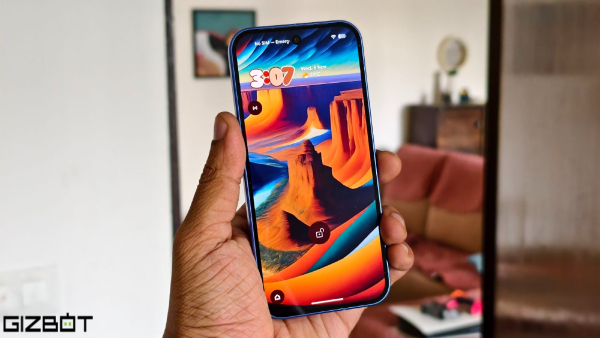
At ₹79,999, rivals will give you faster charging, sometimes stronger gaming, and more storage variants. But none combines camera reliability, clean software, and a 7-year update promise like this. If your priorities are photos, practical AI, and long support-Pixel 10 is the smarter long-term buy. If you’re a heavy gamer or need 45-100 W charging, you’ll be happier elsewhere.
The Pixel 10 isn’t the “spec monster,” but it’s among the least stressful Android phone I’ve used this year. One that encourages you to shoot more, fiddle less, and trust that the picture and the experience will turn out right.
Best Mobiles in India









































